4 Composing a Sonata
Sonata
The archetypical instrumental form that most thoroughly evolved during the Common Practice Era is the sonata (sometimes referred to as sonata-allegro since this structure was most often used as the brisk opening movement of a sonata, symphony, or other multi-movement composition).
Emerging from the simpler ternary form, the sonata is as well cast in three sections: an exposition, development, and recapitulation. The exposition features two contrasting themes (or theme groups), the first in the tonic, and the second (arrived at through a transition) in a closely related key (often the dominant if in a major key, and the relative major if in a minor key). Expositions typically have a closing theme, signaling a full stop rather than proceeding directly into next section. The development freely elaborates and extemporizes on one or both of the themes (or theme groups), sometimes combining the two, and often modulating to distant key regions. The recapitulation brings back the main material from the exposition (which can be altered or truncated to some degree) while articulating the second theme in the tonic for the first time.
Additionally, although not necessary to be defined as a sonata form movement, some composers choose to add an introduction and/or coda. These sections are often in strikingly different moods, tempi, and textures compared with the body of the piece. However, in the original sonata that we will compose, the focus will be on exploring only the main sections of the form. Regarding style, we have chosen as our model one of the later great masters of the form, Charles-Valentin Alkan (1813-1888).
Exposition
First Theme. Many first ‘themes’ of sonatas are more textural in nature (rather than being overtly melodic) and driven by a distinct harmonic progression. Our sonata in c minor features a first theme characterized by a rhythmic motive supported by clear-cut block chords. Some interesting harmonic ideas are as well highlighted below.
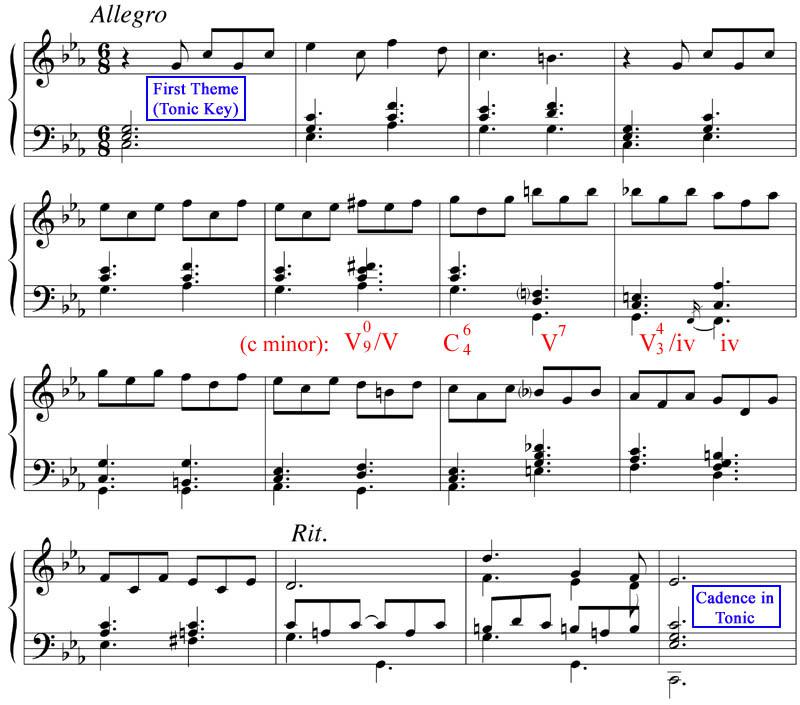
Second Theme. A brief transition brings us to the second theme, here cast in Ab major. Although the typical Classical sonata in a minor key would feature a second theme in the relative major (which would inform us here to compose in Eb), as the form evolved throughout the 19th century more unexpected turns of harmony are observed while still keeping within the confines of the structural dictates. As well, we’ve allowed the bass to take on the responsibility of being the primary means of rhythmic propulsion while a more lyrical melody hovers above. A succinct closing theme brings the exposition to a close.
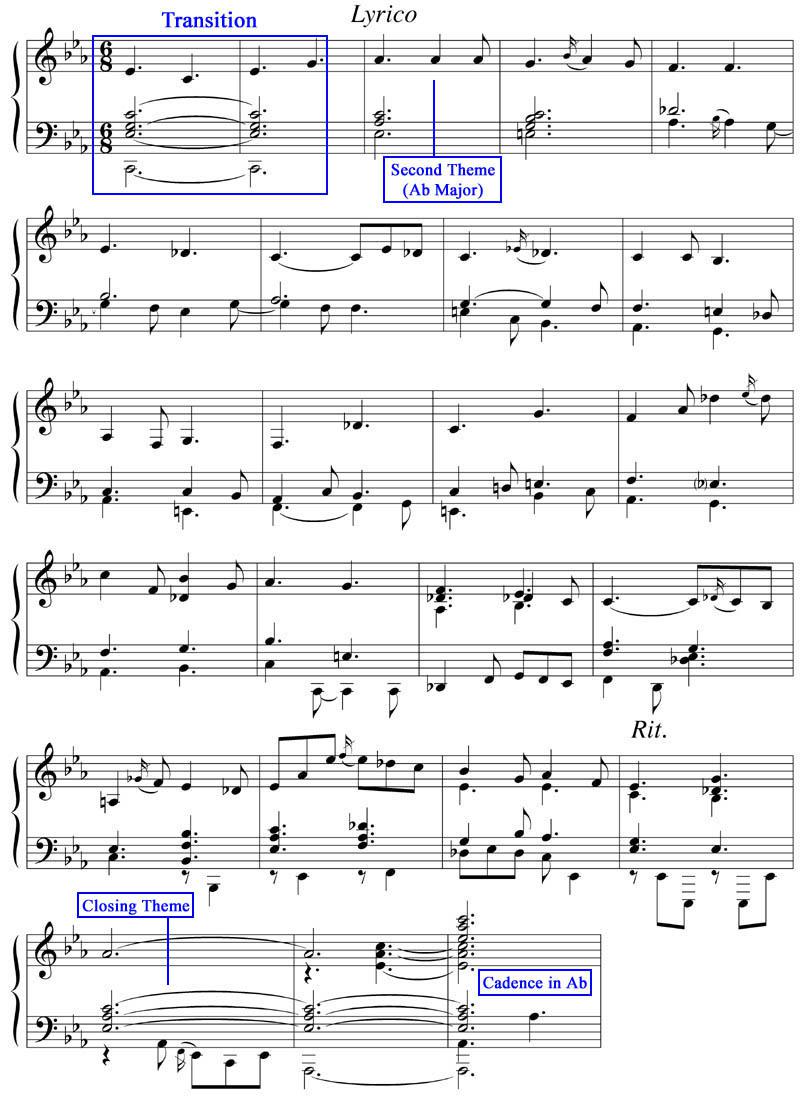
Development
Development of the First Theme. In our simple sonata we will develop each theme in succession. We begin the development in f minor, the relative key to the final cadence of the exposition (Ab major). Here we will explore more distant keys than found in the exposition (such as bb minor), as well as expand on the textures as first introduced to the listener.
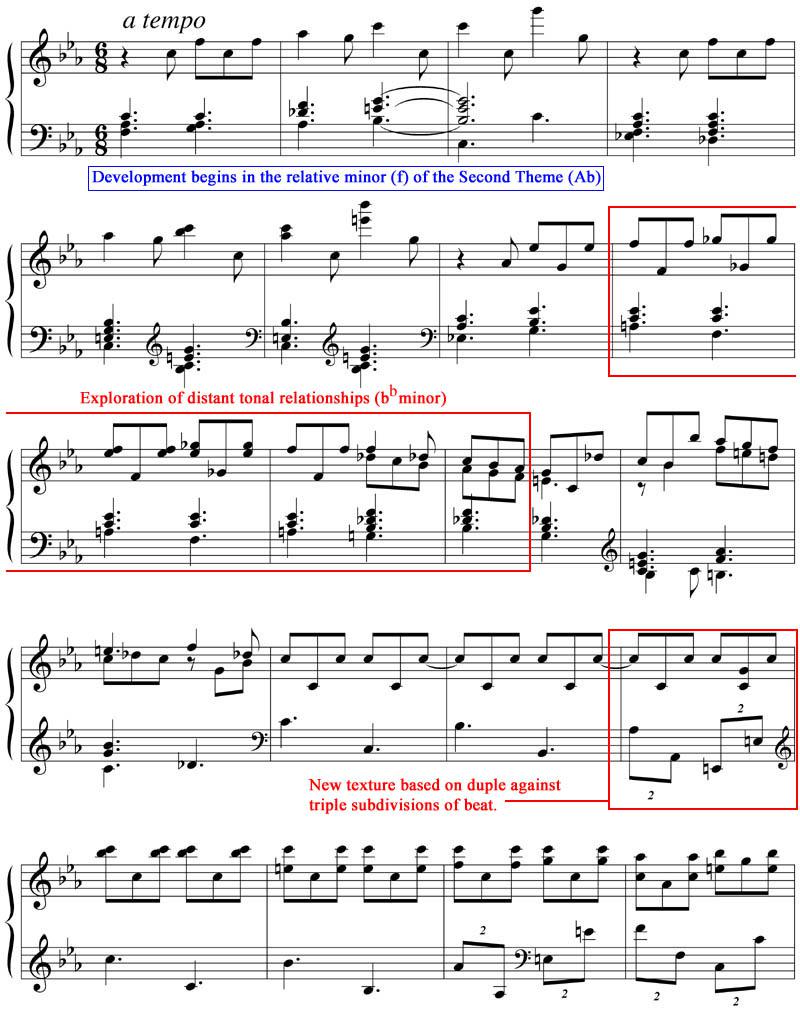
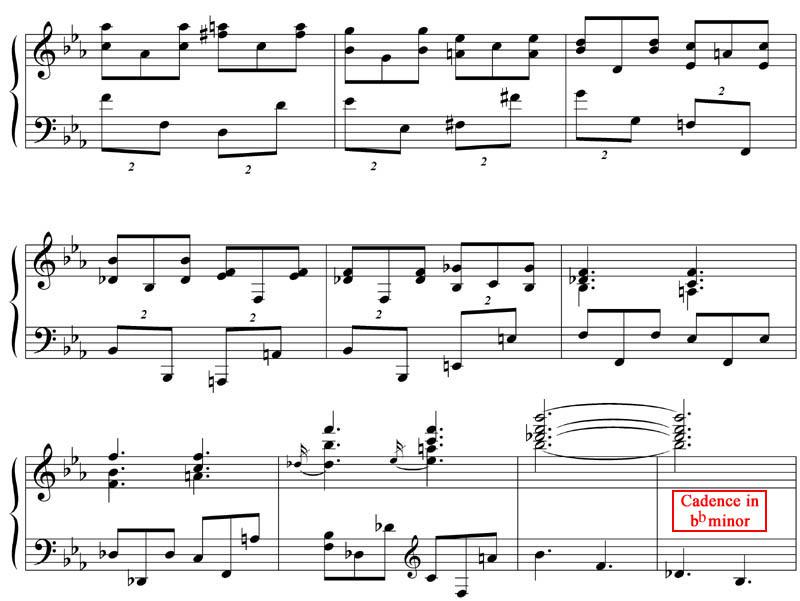
Development of the Second Theme. A brief interlude brings us to the development of the second theme, only now cast in the Classically-oriented relative major of Eb. A tonicization allows f minor, the first key of the development, to emerges within this section as the final key region of the development. This passage, however, acts primarily as a segue to the final dramatic sequence that culminates on a V/V of f minor. This in turn prepares for the return of c minor (the dominant of f minor) and the recapitulation.
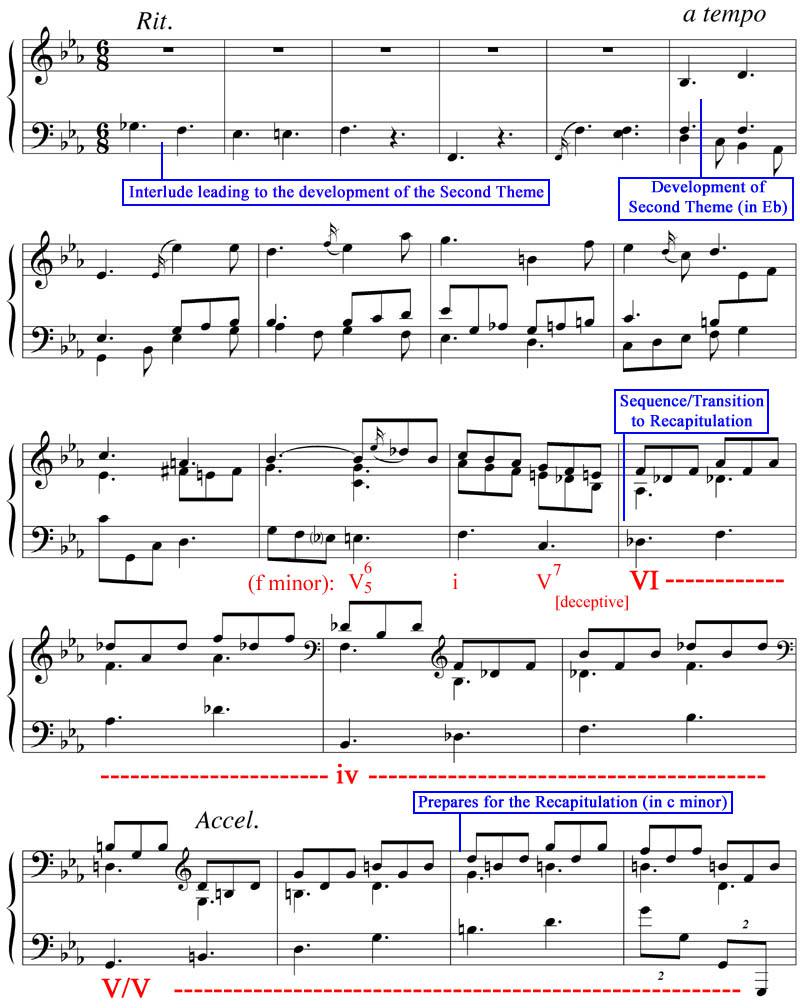
Recapitulation
Restatement of First Theme. Employing idiomatic pianistic devices, we have doubled the first theme in octaves and re-voiced some of the supporting chords to encourage a fuller resonance of the harmonics. Regardless of these largely cosmetic changes, the theme is otherwise presented verbatim.
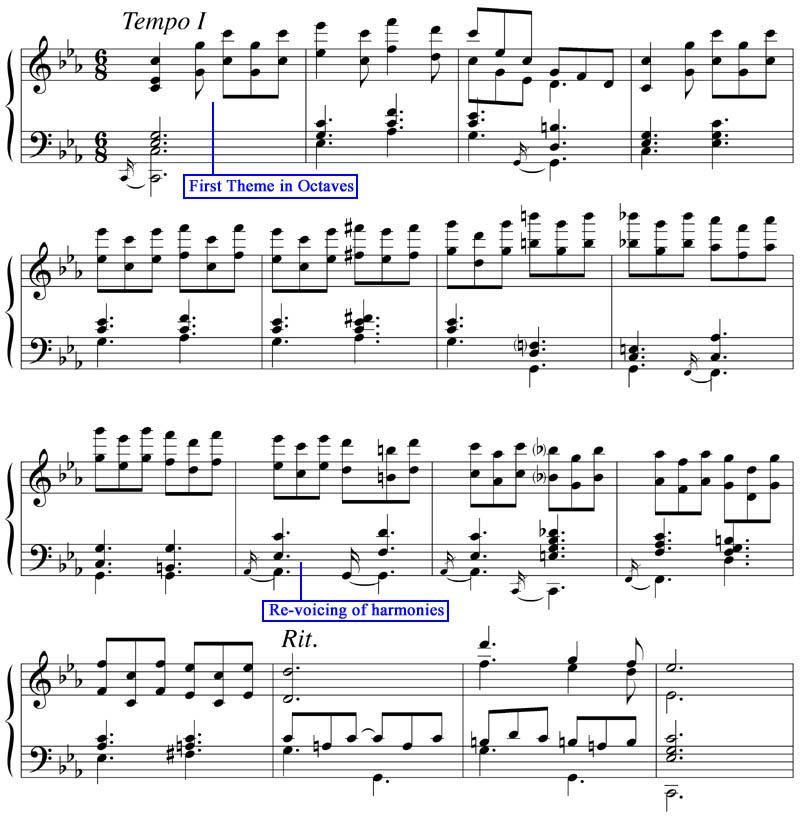
Recapitulation of the Second Theme. Another short transition leads to a final statement of the second theme, this time in the tonic. Completing the passage is the closing theme, as well transposed to c minor.
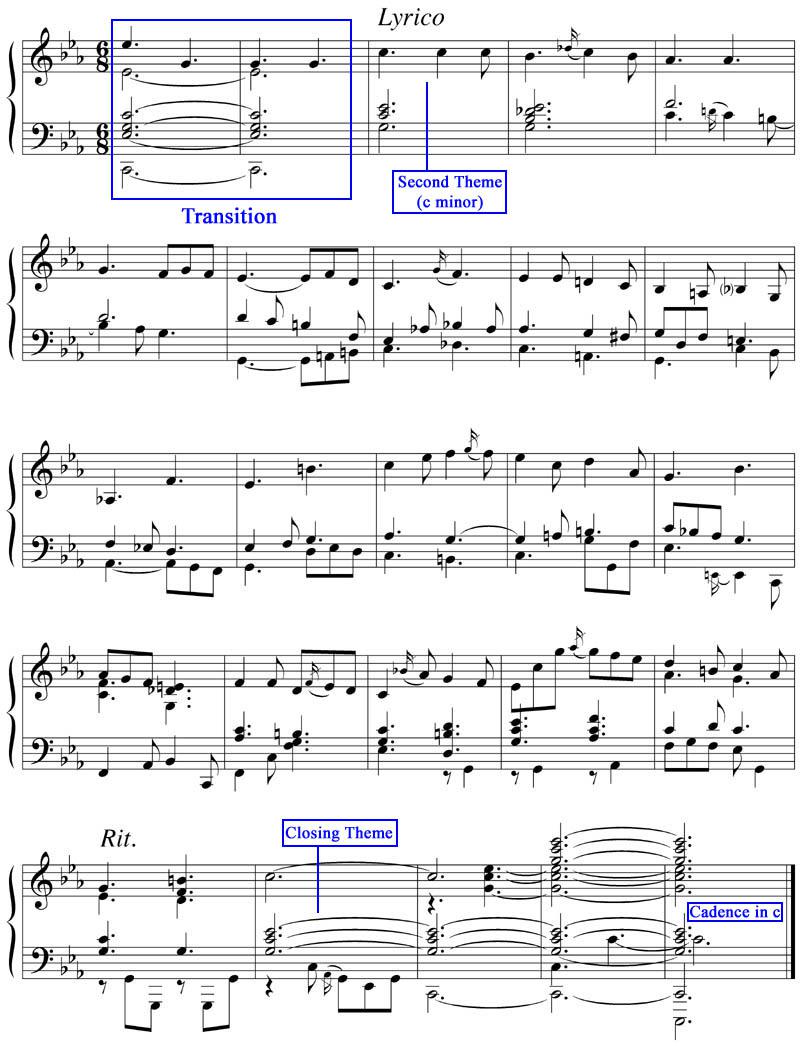
Complete Piece. In keeping with Classical practice, the exposition is repeated in the final version of our sonata. However, perhaps because of its brevity, we may also call it a sonatina.
Listen: Track 6

